No products in the basket.
Blog
Understanding the BS EN 124 Classification
As it is crucial that all types of manhole or access covers are suitably durable, safe for use and fit for purpose, in the UK they are required to meet a set of standards as defined within the BS EN 124 classification. The comprehensive classification, which covers everything from gully grids and surface meter boxes to manhole covers for both pedestrian and vehicular areas, is maintained by the British Standards Institution (BSI) which is the world’s first national standards body and a leading global standards maker. Founded in 1901, BSI aims to ‘inspire trust for a more resilient world’ by sharing knowledge, innovation and best practice to help organisations achieve and deliver continued excellence.
In this article, we provide helpful guidance on what the BS EN 124 classification covers as it is not only applicable to manufacturers and safety regulatory bodies, its guidelines are also relevant for installers of gully tops and manhole covers too, particularly within the road engineering and civil engineering sectors. As well as outlining the different groups and classes that the BS EN 124 standard includes for load bearing, we also highlight some key points that you should consider before choosing suitable manhole covers for varied applications.
What the Classification Covers
First published in 1994, the BS EN 124 classification replaced the BS 497:1976 Specification for Manhole Covers, Road Gully Gratings and Frames for Drainage Purposes. Originally a European standard, it was adopted by the UK and now covers the definitions, classification, general principles of design, performance requirements and test methods for gully tops and manhole tops manufactured from a range of materials. Following substantial revision in 2015, the classification now also includes overarching documentation entitled BS EN 124-1:2015, as well as five sub-sections related to specific materials, which are as follows:
- EN 124‑2 for gully tops and manhole tops made of cast iron.
- EN 124‑3 for gully tops and manhole tops made of steel or aluminium alloys.
- EN 124‑4 for gully tops and manhole tops made of steel-reinforced concrete.
- EN 124‑5 for gully tops and manhole tops made of composite materials.
- EN 124‑6 for gully tops and manhole tops made of polypropylene (PP), polyethylene (PE), or plasticised poly (vinyl chloride) (PVC-U).
In 2015, the standard was also expanded to provide a detailed route to CE marking, which manufacturers of gully top and manhole covers can use to declare that their products comply with all applicable European Directives and Regulations.
It is also worth noting that BS EN 124 does not apply to any gratings or covers that form part of prefabricated drainage channels as per EN 1433. It also doesn’t apply to surface boxes, or floor or roof gullies that are specified in any part of EN 1253.
Different Groups and Classes
The BS EN124 classification includes six groups that each represent different environments where covers or gratings may be used. These include:
- Group 1: Areas that only pedestrians are able to access.
- Group 2: Pedestrian areas and car parks where vehicle access is only occasional. This can include residential driveways.
- Group 3: Forecourts, car parks, industrial sites and areas with slow moving traffic. This group also includes areas in highway locations that are no more than 50cm from the kerb and no more than 20cm onto the verge, however this excludes motorways.
- Group 4: Areas that cars and lorries can access, such as hard shoulders, carriageways, as well as other pedestrian areas.
- Group 5: High load areas, including docks, loading areas, and aircraft pavements.
- Group 6: Aircraft pavements and other areas with high wheel loads.
It also includes several classes that rate the static load capabilities of a gully top, access cover or manhole cover. These range between Class A15 to Class F900, as detailed below:
- Class A15 Manhole Cover: Used to denote covers and gratings that can withstand a 15kN test load.
- Class B125 Manhole Cover: Used to denote covers and gratings that can withstand a 25kN test load.
- Class C250 Manhole Cover: Used to denote covers and gratings that can withstand a 250kN test load.
- Class D400 (D400 Double Triangular Cover): Used to denote covers and gratings that can withstand a 400kN test load.
- Class E600: Used to denote covers and gratings that can withstand a 600kN test load.
- Class F900: Used to denote covers and gratings that can withstand a 900kN test load.
These classes can be matched with their respective groups to indicate the level of load bearing that is required from a cover or grate when used within a specific type of area, and therefore provide essential guidance for installers to ensure ongoing safety and durability for manhole cover and gully top installations.
You can find further information about the BS EN 124: 2015 classification along with many other UK engineering standards on the BSI website, however please note that full versions of the standards must be purchased before they can be viewed either as PDFs or printed documents.
Alternative Classifications
While British Standard classifications are by far the most widely recognised standards, the Fabricated Access Covers Trade Association (FACTA) was created specifically in the early 1990s by a number of manufacturers to produce its own set of gradings for fabricated access covers. Its ratings range between FACTA A (for load bearing of up to 5kN) through to FACTA F (for load bearing up to 237kN) and in general it aims to offer detailed calculations for varied applications. Importantly however, fabricated covers are usually produced from either steel or aluminium rather than cast iron or galvanised steel, and are therefore only suitable for use in areas with little to no vehicle access, or areas that have 20mph speed limits. As a result, covers rated by FACTA should not be used in areas with any fast moving traffic such as main roads or highways, or in areas where a high load bearing is required.
Further details on FACTA, including its full specifications for fabricated access covers, are available online via its website.
Other Considerations When Choosing a Cover
In addition to making sure that any manhole or access covers you use are compliant with the relevant British Standards and offer the level of load capacity that is required, before carrying out an installation you might also want to consider the finished aesthetic. Recessed covers can help to disguise access points that are positioned within highly visible and generally more manicured locations such as gardens or driveways, while still providing adequate load bearing for less demanding areas.
It is also advised that if you are fitting a replacement cover for an access point into an inspection chamber, you should ensure that it is compatible with the installed frame. If this isn’t possible, then both the cover and the frame should be replaced entirely to avoid compromising the strength, integrity and safety of the cover.
We would also recommend that if you are unsure about which load bearing level to opt for, then you should always choose the higher rating as it is safer to select a more robust solution than an insufficient one.
Fully Compliant Covers and Grates
At EasyMerchant we offer a wide number of manhole covers and gully grates in various sizes and materials that are suitable for numerous applications. Produced by leading brands from across Europe, our products meet the British Standards as detailed within this article, and many carry the Kitemark stamp to denote their high quality and compliance. On our website you can also easily find the load capacity of all of the access covers that we stock, enabling you to choose the ideal cover or grate for your project requirements.
If you’d like further advice on access covers and load bearing, or if you have any questions about our range of products such as manhole covers, soakaway crates or underground pipe fittings, please don’t hesitate to get in touch – a member of our expert team will be more than happy to help.
Shop Manhole Covers and Frames:

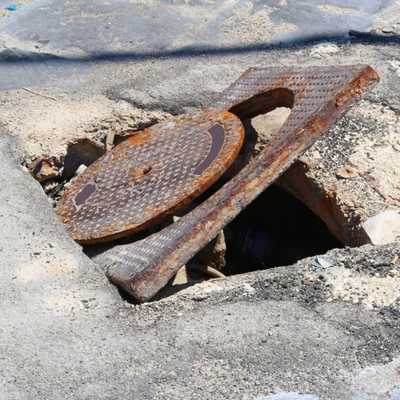

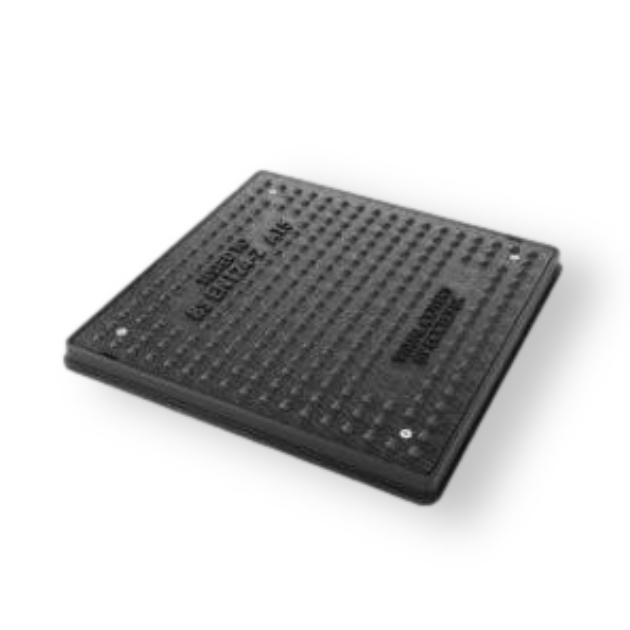
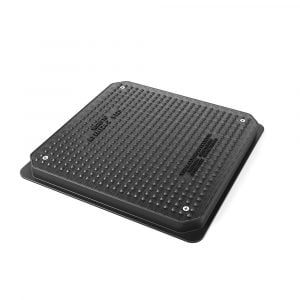
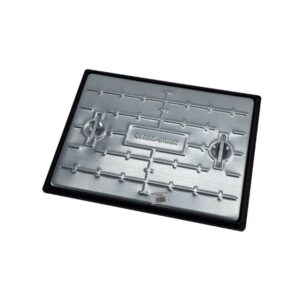
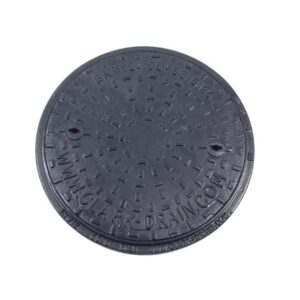
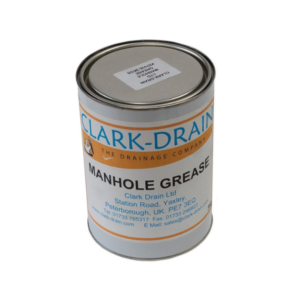
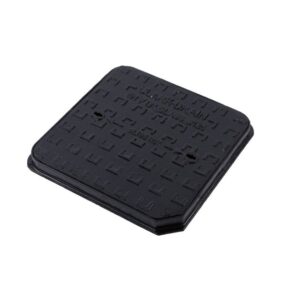
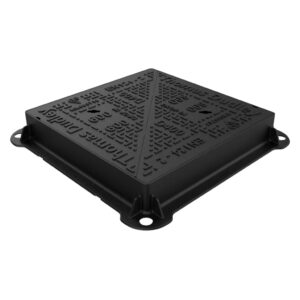
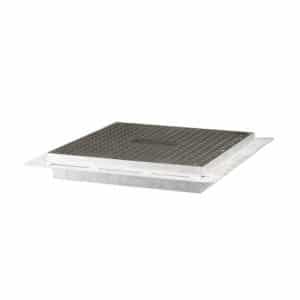
Is a 5k load manhole cover suitable for a domestic driveway where the normal daily traffic is private cars with delivery vans/ lorries on rare occasions.
Hi Margaret,
We would advise going by the industry standard load ratings which are listed as A15, B125 etc to ensure that the cover that you use is suitable for the area it will be used in.
For a domestic driveway, where you will only have cars passing over the cover, the lowest rating we would recommend would be A15 – this rating shows that the cover has been tested against a 1.5 tonne load and conforms to the standard. If you are likely to have any heavier vehicles pass over the cover, we would recommend upgrading to B125 as this offers a tested load rating of 12.5 tonnes and will therefore be able to withstand the weight of a van.
We do also stock unrated plastic manhole covers which state the load rating that they have been tested against in the individual cover description.
I hope this helps!
Kind Regards
Lainey
What skid resistance value does en 124 stipulate please